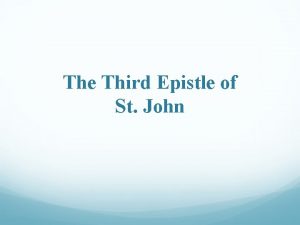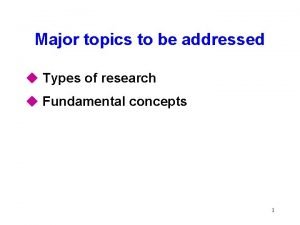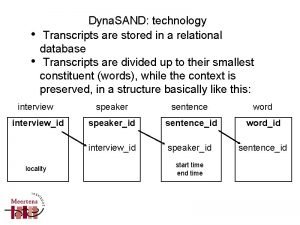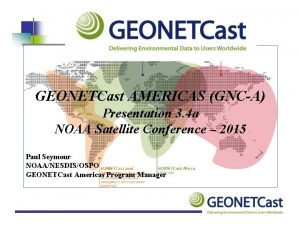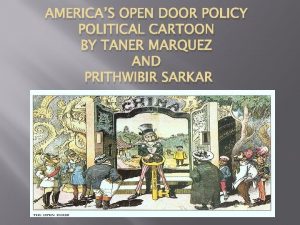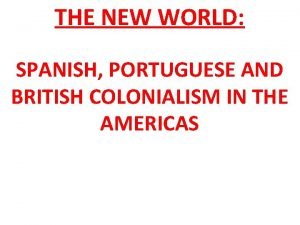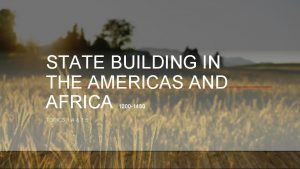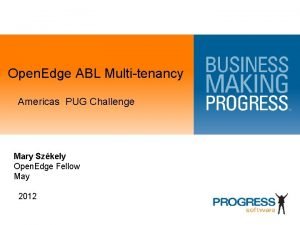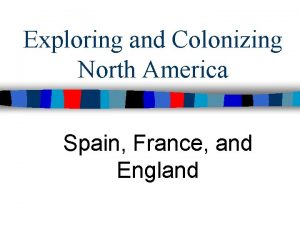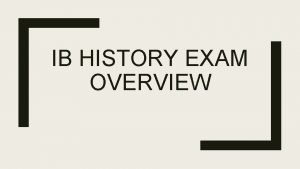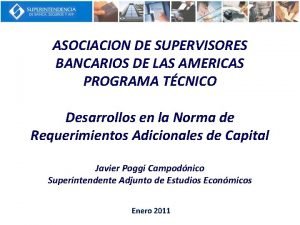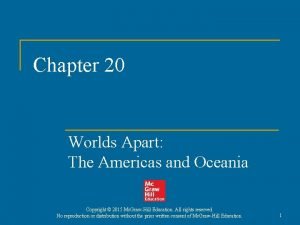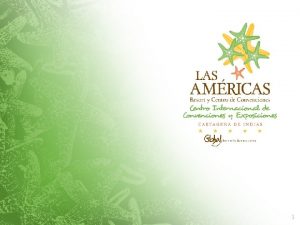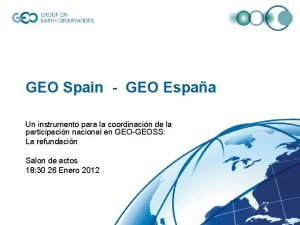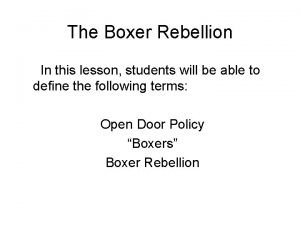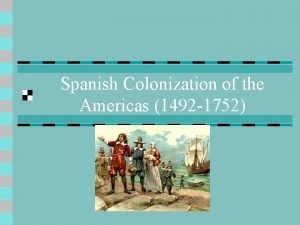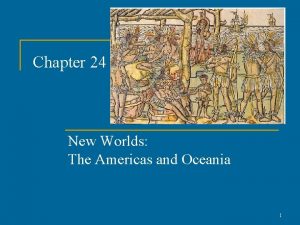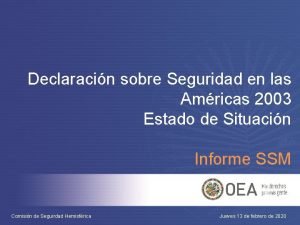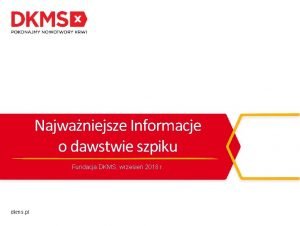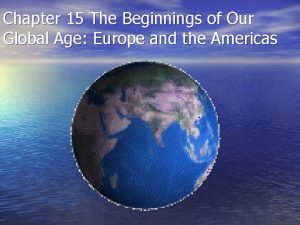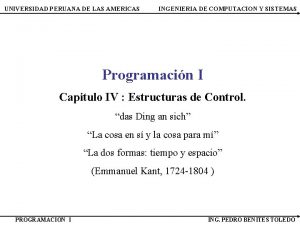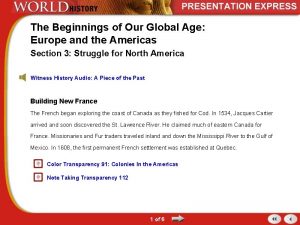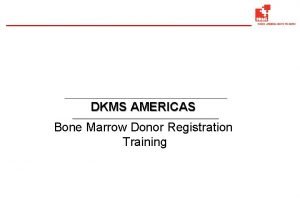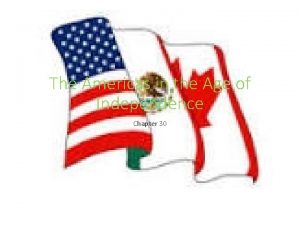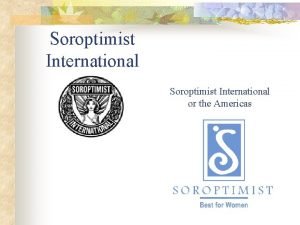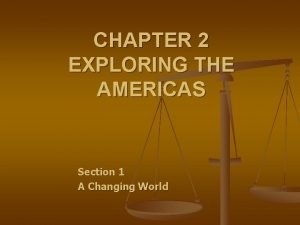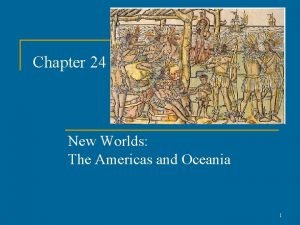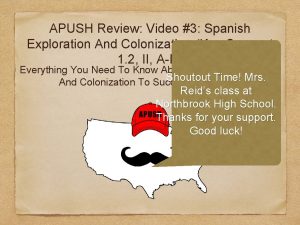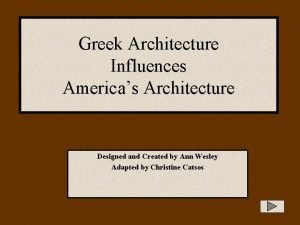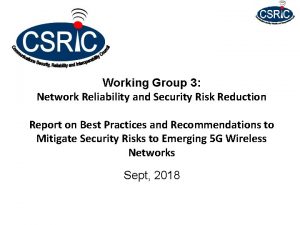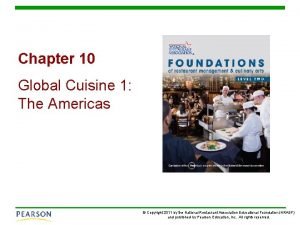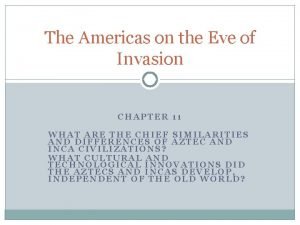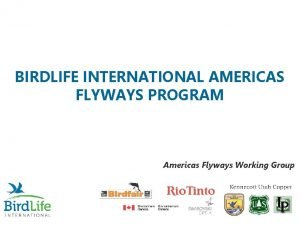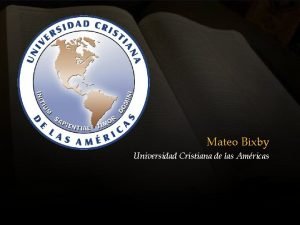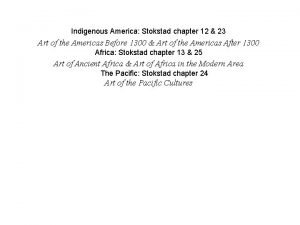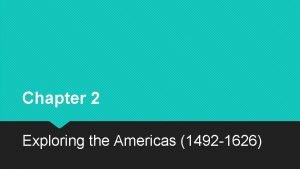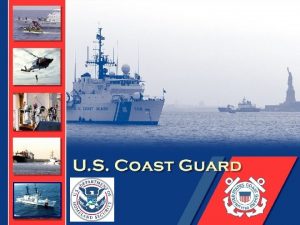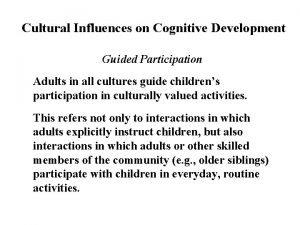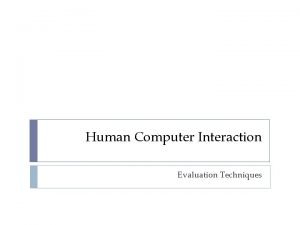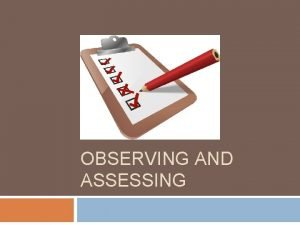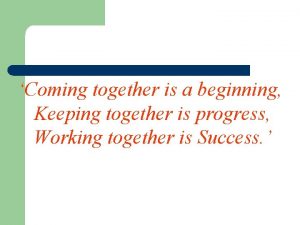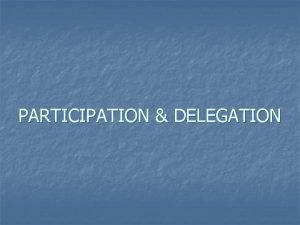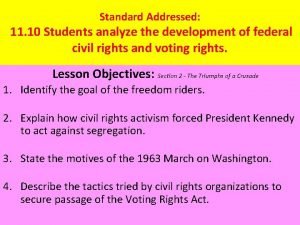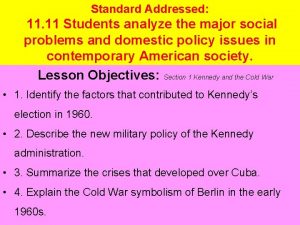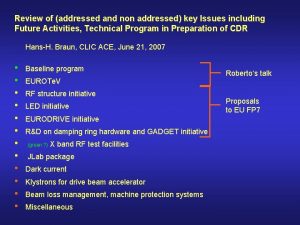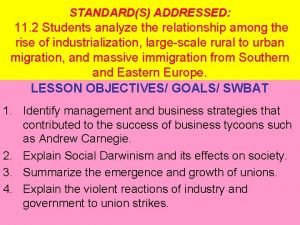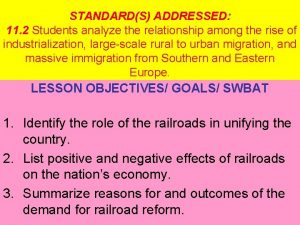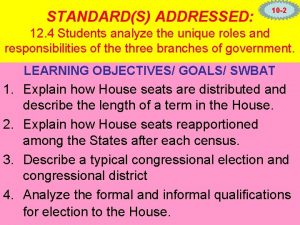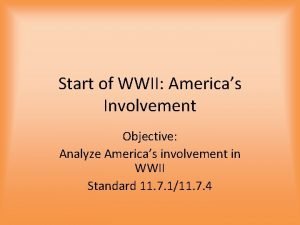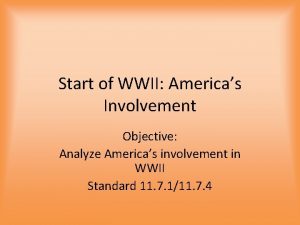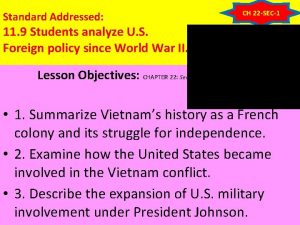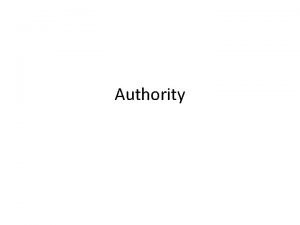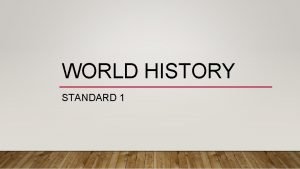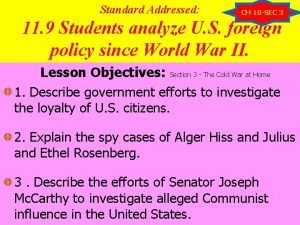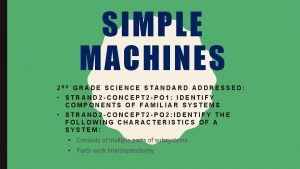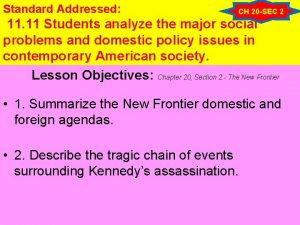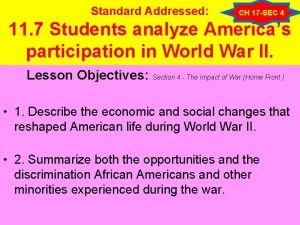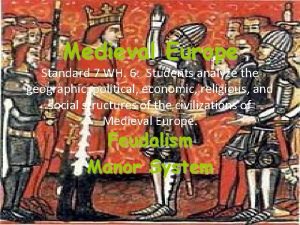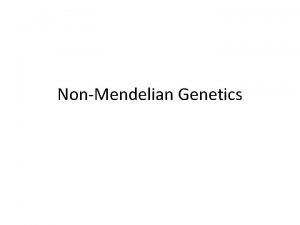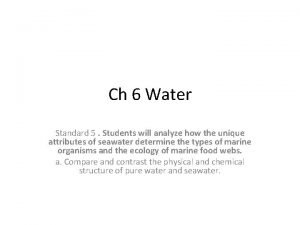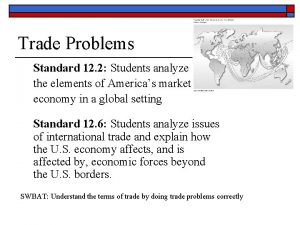Standard Addressed 11 7 Students analyze Americas participation

































































- Slides: 65

Standard Addressed: 11. 7 Students analyze America’s participation in World War II. • • Lesson Objectives: Section 3 - The War in the Pacific 1. Identify key turning points in the war in the Pacific. 2. Describe the Allied offensive against the Japanese. 3. Explain both the development of the atomic bomb and debates about its use. 4. Describe the challenges faced by the Allies in building a just and lasting peace.


THE UNITED STATES IN WORLD WAR II In order to defeat Japan and end the war in the Pacific, the United States unleashes a terrible new weapon, the atomic bomb.

SECTION 3: THE WAR IN THE PACIFIC • The Americans did not celebrate long, as Japan was busy conquering an empire that dwarfed Hitler’s Third Reich • Japan had conquered much of southeast Asia including the Dutch East Indies, Guam, and most of China

SECTION 3 The War in the Pacific The Allies Stem the Japanese Tide Japanese Advances • In first 6 months after Pearl Harbor, Japan conquers empire • Gen. Douglas Mac. Arthur leads Allied forces in Philippines • March 1942 U. S. , Filipino troops trapped on Bataan Peninsula • FDR orders Mac. Arthur to leave; thousands of troops remain Continued. . . NEXT

The Bataan Death March which began on April 9, 1942, was the forcible transfer by the Imperial Japanese Army of 60, 000– 80, 000 Filipino and American prisoners of war after the three-month Battle of Bataan in the Philippines during World War II. All told, approximately 2, 500– 10, 000 Filipino and 100– 650 American prisoners of war died before they could reach their destination at Camp O'Donnel


The War in the Pacific Date and Place Bataan; The War in the Pacific Leaders What happened? Involved (Douglas) the Allies held out for four Mac. Arthur; months against invading Japanese forces before abandoning the peninsula.

SECTION 3 The War in the Pacific The Allies Stem the Japanese Tide Doolittle’s Raid • April 1942, Lt. Col. James Doolittle leads raid on Tokyo Continued. . . NEXT




SECTION 3 continued The Allies Stem the Japanese Tide Battle of the Coral Sea • May 1942, U. S. , Australian soldiers stop Japanese drive to Australia • For first time since Pearl Harbor, Japanese invasion turned back NEXT

BATTLE OF THE CORAL SEA • The main Allied forces in the Pacific were Americans and Australians • In May 1942 they succeeded in stopping the Japanese drive toward Australia in the five-day Battle of the Coral Sea






SECTION 3 continued The Allies Stem the Japanese Tide The Battle of Midway • Admiral Chester Nimitz commands U. S. naval forces in Pacific • Allies break Japanese code, win Battle of Midway, stop Japan again • Allies advance island by island to Japan NEXT

THE BATTLE OF MIDWAY • Japan’s next thrust was toward Midway Island – a strategic Island northwest of Hawaii • Admiral Chester Nimitz, the Commander of American Naval forces in the Pacific, moved to defend the Island • The Americans won a decisive victory as their planes destroyed 4 Japanese aircraft carriers and 250 planes

• The Battle of Midway was a turning point in the war – soon the Allies were island hopping toward Japan

The War in the Pacific Date and Place Leaders Involved Midway; (Chester W. ) Nimitz; What happened? Americans turned back a Japanese invasion force headed for Hawaii.

SECTION 3 The Allies Go on the Offensive The Allied Offensive • Allied offensive begins August 1942 in Guadalcanal • October 1944, Allies converge on Leyte Island in Philippines - return of Mac. Arthur Continued. . . NEXT


The War in the Pacific Date and Place Leaders Involved Guadalca Mac. Arthur; nal: What happened? Americans dealt Japan its first defeat on land.

SECTION 3 The Allies Go on the Offensive The Japanese Defense • Japan uses kamikaze attack—pilots crash bomb-laden planes into ships • Battle of Leyte Gulf is a disaster for Japan - Imperial Navy severely damaged; plays minor role after Continued. . . NEXT


KAMIKAZE PILOTS ATTACK ALLIES • The Americans In the Battle for the Philippines, 424 Kamikaze pilots sank 16 ships and damaged 80 more continued leapfrogging across the Pacific toward Japan • Japanese countered by employing a new tactic – Kamikaze (divine wind) attacks • Pilots in small bombladen planes would crash into Allied ships

The War in the Pacific Date and Place Leyte Gulf: The War in the Pacific Leaders What happened? Involved Mac. Arthur; Americans retook the Philippines and dealt a devastating blow to the Japanese navy.

SECTION 3 continued The Allies Go on the Offensive Iwo Jima • Iwo Jima critical as base from which planes can reach Japan • 6, 000 marines die taking island; of 20, 700 Japanese, 200 survive NEXT

• General Mac. Arthur and the Allies next turned to the Island of Iwo Jima • The island was critical to the Allies as a base for an attack on Japan • It was called the most heavily defended spot on earth • Allied and Japanese forces suffered heavy casualties IWO JIMA American soldiers plant the flag on the Island of Iwo Jima after their victory

The War in the Pacific Date and Place The War in the Pacific Leaders What happened? Involved Iwo Mac. Arthur; . Jima: in a fierce battle, the Allies took the island from Japan

SECTION 3 continued The Allies Go on the Offensive The Battle for Okinawa • April 1945 U. S. Marines invade Okinawa • April–June: 7, 600 U. S. troops, 110, 000 Japanese die • Allies fear invasion of Japan may mean 1. 5 million Allied casualties NEXT


THE BATTLE FOR OKINAWA • In April 1945, U. S. marines invaded Okinawa • The Japanese unleashed 1, 900 Kamikaze attacks sinking 30 ships and killing 5, 000 seamen • Okinawa cost the Americans 7, 600 marines and the Japanese 110, 000 soldiers


The War in the Pacific Date and Place Okinawa: The War in the Pacific Leaders What happened? Involved Mac. Arthur; the Allies took the island from Japan.

INVADE JAPAN? • After Okinawa, Mac. Arthur predicted that a Normandy type amphibious invasion of Japan would result in 1, 500, 000 Allied deaths • President Truman saw only one way to avoid an invasion of Japan. . . Okinawa The loss of life at Iwo Jima and Okinawa convinced Allied leaders that an invasion of Japan was not the best idea


SECTION 3 The Atomic Bomb Ends the War The Manhattan Project • J. Robert Oppenheimer is research director of Manhattan Project • July 1945, atomic bomb tested in New Mexico desert • President Truman orders military to drop 2 atomic bombs on Japan NEXT

ATOMIC BOMB DEVELOPED • Japan had a huge army that would defend every inch of the Japanese mainland • So Truman decided to use a powerful new weapon developed by scientists working on the Manhattan Project – the Atomic Bomb

SECTION 3 The Atomic Bomb Ends the War Hiroshima and Nagasaki • August 6, Hiroshima, major military center, destroyed by bomb • 3 days later, bomb dropped on city of Nagasaki • September 2, 1945 Japan surrenders NEXT

U. S. DROPS TWO ATOMIC BOMBS ON JAPAN • Truman warned Japan in late July 1945 that without a immediate Japanese surrender, it faced “prompt and utter destruction” • On August 6 (Hiroshima) and August 9 (Nagasaki) a B-29 bomber dropped Atomic Bombs on Japan The plane and crew that dropped an atomic bomb on Hiroshima, Japan

August 6, 1945 HIROSHIMA

August 9, 1945 NAGASAKI

The War in the Pacific Date and Place Tokyo Bay; The War in the Pacific Leaders What happened? Involved Hirohito, Mac. Arthur; Japan formally surrendered.

JAPAN SURRENDERS • Japan surrendered days after the second atomic bomb was dropped • General Mac. Arthur said, “Today the guns are silent. The skies no longer rain death. . . the entire world is quietly at peace. ” At the White House, President Harry Truman announces the Japanese surrender, August 14, 1945 • WAR ENDS SEPT 2, 1945

The War in the Pacific The Science War Date and Place Los Alamos; Leaders Involved (J. Robert) Oppenheimer; Hiroshima and Truman; Nagasaki: What happened? the first atomic bomb was built, successfully completing Manhattan Project. first atomic bombs were dropped.

SECTION 3 Rebuilding Begins The Yalta Conference • February 1945, FDR, Churchill, Stalin meet in Yalta - discuss post-war world • FDR, Churchill concession: temporarily divide Germany into 4 parts • Stalin promises free elections in Eastern Europe; will fight Japan • FDR gets support for conference to establish United Nations Human Costs of the War • WW II most destructive war in human history Continued. . . NEXT

• In February 1945, as the Allies pushed toward victory in Europe, an ailing FDR met with Churchill and Stalin at the Black Sea resort of Yalta in the USSR • A series of compromises were worked out concerning postwar Europe THE YALTA CONFERENCE (L to R) Churchill, FDR and Stalin at Yalta

YALTA AGREEMENTS • 1) They agreed to divide Germany into 4 occupied zones after the war • 2) Stalin agreed to free elections in Eastern Europe • 3) Stalin agreed to help the U. S. in the war against Japan and to join the United Nations

The War in the Pacific Planning and Rebuilding for Peace Date and Leaders What happened? Place Involved Yalta: Roosevelt, Stalin, Churchill; at the Yalta Conference, Allied leaders made important decisions about the postwar world.

SECTION 3 continued Rebuilding Begins The Nuremberg War Trials • Nuremberg trials— 24 Nazi leaders tried, sentenced - charged with crimes against humanity, against the peace, war crimes • Establish principle that people responsible for own actions in war NEXT


The War in the Pacific Planning and Rebuilding for Peace Date and Leaders What happened? Place Involved San N/A Francis co: United Nations (UN) established

SECTION 3 continued Rebuilding Begins The Occupation of Japan • Mac. Arthur commands U. S. occupation forces in Japan • Over 1, 100 Japanese tried, sentenced • Mac. Arthur reshapes Japan’s economy, government NEXT

THE OCCUPATION OF JAPAN • Japan was occupied by U. S. forces under the command of General Mac. Arthur • During the seven- year occupation, Mac. Arthur reshaped Japan’s economy by introducing free-market practices that led to a remarkable economic recovery • Additionally, he introduced a liberal constitution that to this day is called the Mac. Arthur Constitution

NUREMBERG WAR TRIALS Herman Goering, Hitler's right-hand man and chief architect of the German war effort, testifies at his trial. He was found guilty of war crimes but avoided execution by swallowing potassium cyanide. • • • The discovery of Hitler’s death camps led the Allies to put 24 surviving Nazi leaders on trial for crimes against humanity, crimes against the peace, and war crimes The trials were held in Nuremberg, Germany “I was only following orders” was not an acceptable defense as 12 of the 24 were sentenced to death and the others to life in prison

The War in the Pacific Planning and Rebuilding for Peace Date and Leaders What happened? Place Involved Nurembe rg: Jackson; at the Nuremberg trials, Nazi leaders were tried for wartime crimes

• B – Why was the Battle of Leyte Gulf so crucial to the Allies? – The Battle was a disaster for the Japan. From then on, the Imperial Navy played only a minor role in the defense of Japan.

Chapter 17 Section 2 Section 3 MAIN IDEA QUESTIONS • A – In what ways were the American victory at Midway and the Japanese triumph at Pearl Harbor alike? – Both were surprise naval attacks that resulted in substantial destruction of the Japanese fleet.

• C – Why was Okinawa a significant island in the war in the Pacific? – It was the last island that stood between the Allies and a final assault on Japan. – The battle itself was a foretaste of what the Allies imagined the final invasion of Japan would be.

• E – What decisions did Roosevelt, Churchill, and Stalin make at the Yalta Conference? – They agreed to a temporary division of Germany into four zones; – Stalin promised that the Soviet occupied Eastern European countries would have free elections; – Stalin agreed to defeat Japan; – Stalin agreed to establish the United Nations.

• D – Why was Roosevelt anxious to make concessions to Stalin concerning the fate of Postwar Germany? – FDR wanted Soviet help in the war against Japan; – He also wanted soviet cooperation in establishing the United Nations.
 Contoh strong entity dan weak entity
Contoh strong entity dan weak entity The third epistle of st. john is addressed to________.
The third epistle of st. john is addressed to________. Topics to be addressed
Topics to be addressed Partially addressed mail
Partially addressed mail Audience addressed audience invoked
Audience addressed audience invoked Partially addressed mail
Partially addressed mail Addressed to the party misled peek v gurney
Addressed to the party misled peek v gurney Non programmed decision example
Non programmed decision example Technology addressed
Technology addressed The first favorite novel of rizal
The first favorite novel of rizal Geonetcast americas
Geonetcast americas Aztec farming
Aztec farming Open door policy political cartoons
Open door policy political cartoons Spanish caste system in the americas
Spanish caste system in the americas State building in the americas and africa
State building in the americas and africa Abl americas
Abl americas Spanish north america
Spanish north america Americas game
Americas game Riskminds americas
Riskminds americas Vsnl americas
Vsnl americas Ib history exam
Ib history exam Asociación de supervisores bancarios de las américas
Asociación de supervisores bancarios de las américas Worlds apart the americas and oceania
Worlds apart the americas and oceania Centro internacional de convenciones
Centro internacional de convenciones Geo
Geo Americas open door policy
Americas open door policy Americas global position
Americas global position Spanish colonization of the americas
Spanish colonization of the americas Chapter 24 new worlds the americas and oceania
Chapter 24 new worlds the americas and oceania Declaración sobre seguridad en las américas 2003
Declaración sobre seguridad en las américas 2003 Dkms americas
Dkms americas Hteamericas
Hteamericas Rochem americas
Rochem americas The beginnings of our global age europe and the americas
The beginnings of our global age europe and the americas Ingenieria
Ingenieria The beginnings of our global age europe and the americas
The beginnings of our global age europe and the americas Dkms america
Dkms america The americas in the age of independence
The americas in the age of independence Soroptimist international of the americas
Soroptimist international of the americas Chapter 2 exploring the americas study guide
Chapter 2 exploring the americas study guide New worlds the americas and oceania
New worlds the americas and oceania Spanish caste system in the americas
Spanish caste system in the americas Theatron of the americas
Theatron of the americas Nist frame
Nist frame Chapter 10 global cuisine 1 the americas
Chapter 10 global cuisine 1 the americas The americas on the eve of invasion
The americas on the eve of invasion Transversal de las americas
Transversal de las americas Hte americas
Hte americas International gateway of the americas
International gateway of the americas Mateo bixby
Mateo bixby Art of the americas before 1300
Art of the americas before 1300 What did amerigo vespucci explore
What did amerigo vespucci explore Chapter 24 the americas and oceania
Chapter 24 the americas and oceania Americas guardians mc
Americas guardians mc Kerangka kurikulum standard sekolah menengah
Kerangka kurikulum standard sekolah menengah Standard error and standard deviation
Standard error and standard deviation Definition of standard language
Definition of standard language Standard costs are
Standard costs are Example of guided participation
Example of guided participation Kuwait turkish participation bank
Kuwait turkish participation bank Automated analysis in hci
Automated analysis in hci Participation through language
Participation through language Disadvantages of participation charts
Disadvantages of participation charts An_vipp
An_vipp Workers participation in management
Workers participation in management Delegation and participation
Delegation and participation

